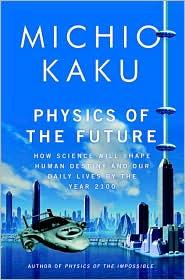Visionary Futures in Physics and Business
Michio Kaku’s “Physics of the Future” offers a thought-provoking exploration of how scientific advancements will reshape our world by 2100. While the book primarily delves into technological and scientific predictions, its insights have profound implications for business strategy, leadership, and digital transformation. By examining the interplay between physics and future societal shifts, we can derive strategic insights applicable to today’s rapidly evolving professional landscape.
The Convergence of Science and Business Strategy
Kaku’s exploration begins with the premise that the rapid pace of technological innovation will fundamentally alter the fabric of society. For business leaders, this means anticipating and adapting to changes that are currently on the horizon. The convergence of quantum computing, artificial intelligence, and biotechnology is poised to redefine industries, much like the digital revolution did over the past few decades. To illustrate, consider the transformative impact of the Internet revolution, which parallels the anticipated seismic shifts expected from these emergent technologies.
Strategic Foresight and Scenario Planning
One of the key takeaways from Kaku’s work is the importance of strategic foresight. Businesses must engage in scenario planning to navigate the uncertainties of the future. By anticipating potential technological disruptions, organizations can develop flexible strategies that allow them to pivot as needed. This approach is reminiscent of Peter Schwartz’s “The Art of the Long View,” which emphasizes the role of scenario planning in strategic decision-making. Similarly, Clayton Christensen’s “The Innovator’s Dilemma” provides a complementary perspective, highlighting how disruptive innovations can unsettle established markets and necessitate strategic foresight.
Technological Disruption and Organizational Agility
Kaku envisions a future where advances in technology, such as artificial intelligence and robotics, will lead to significant disruptions across various sectors. For businesses, this underscores the necessity of cultivating organizational agility. Companies that can swiftly adapt to technological changes will be better positioned to seize new opportunities and mitigate risks. This theme aligns with “Antifragile” by Nassim Nicholas Taleb, which advocates for building systems that gain strength from disorder, a principle equally relevant to organizational agility.
The Role of Artificial Intelligence in Business
Artificial intelligence, as discussed by Kaku, is expected to revolutionize industries by automating routine tasks and enhancing decision-making processes. Businesses can leverage AI to optimize operations, improve customer experiences, and drive innovation. However, this requires a strategic approach to AI integration, ensuring that technology complements human capabilities rather than replacing them. For example, AI can be applied in customer service through chatbots, enhancing efficiency while allowing human agents to focus on complex inquiries.
Digital Transformation and the Future Workforce
As digital transformation accelerates, the nature of work will evolve. Kaku predicts a future where remote work, digital collaboration, and virtual reality become commonplace. For businesses, this necessitates a reimagining of workplace dynamics and a focus on fostering a digital-first culture. The shift parallels the strategic insights found in “The Second Machine Age” by Erik Brynjolfsson and Andrew McAfee, which discusses how digital technologies are reshaping job markets and economic structures.
Building a Resilient and Adaptive Workforce
In preparing for the future, organizations must invest in reskilling and upskilling their workforce. As automation and AI take on more routine tasks, human roles will shift towards creativity, problem-solving, and strategic thinking. This aligns with the insights from “The Future of Work” by Thomas W. Malone, which emphasizes the need for adaptable and resilient employees in a rapidly changing environment. Case studies from companies like IBM, which have initiated large-scale reskilling programs, exemplify this forward-thinking approach.
Ethical Considerations and Leadership in a Technological Era
Kaku’s exploration of future technologies also raises important ethical considerations. As businesses integrate advanced technologies, leaders must navigate complex ethical dilemmas, ensuring that innovations align with societal values and contribute positively to the community. This concern is further echoed in “Ethics for the Information Age” by Michael J. Quinn, which discusses the ethical implications of technological advancements.
Ethical Leadership and Corporate Responsibility
Ethical leadership will be crucial in guiding organizations through the challenges posed by technological advancements. Business leaders must prioritize transparency, accountability, and corporate responsibility, fostering trust with stakeholders and ensuring that technology serves the greater good. For instance, the implementation of AI-driven surveillance technologies requires careful consideration of privacy rights and ethical boundaries.
Innovation Ecosystems and Collaborative Networks
Kaku highlights the importance of innovation ecosystems, where collaboration between academia, industry, and government drives technological progress. For businesses, participating in such ecosystems can accelerate innovation and provide access to cutting-edge research and development. This concept is also explored in “The Wide Lens” by Ron Adner, which emphasizes viewing innovation through collaborative frameworks.
Fostering Collaborative Innovation
To thrive in the future, organizations must embrace open innovation and collaborative networks. This involves partnering with startups, research institutions, and other businesses to co-create solutions and share knowledge. The concept of innovation ecosystems is echoed in works like “Open Innovation” by Henry Chesbrough, which advocates for a more collaborative approach to innovation. Real-world examples include initiatives like the European Union’s Horizon 2020 program, which fosters cross-border collaboration in research and innovation.
Final Reflection: Embracing the Future with Strategic Vision
“Physics of the Future” offers a compelling glimpse into the possibilities that lie ahead. For business leaders, the challenge is to harness these insights and translate them into actionable strategies. By embracing technological advancements, fostering organizational agility, and prioritizing ethical leadership, businesses can navigate the complexities of the future and emerge as leaders in their respective fields.
In summary, Kaku’s work serves as a call to action for professionals to anticipate change, adapt to new realities, and lead with vision and integrity in a world shaped by the transformative power of physics and technology. This synthesis is not only relevant to technological domains but also extends to leadership, design thinking, and change management. Leaders must cultivate environments that encourage innovation and adaptability, echoing lessons from “Leaders Eat Last” by Simon Sinek, which underscores the importance of creating trust and fostering a strong organizational culture in times of change.

